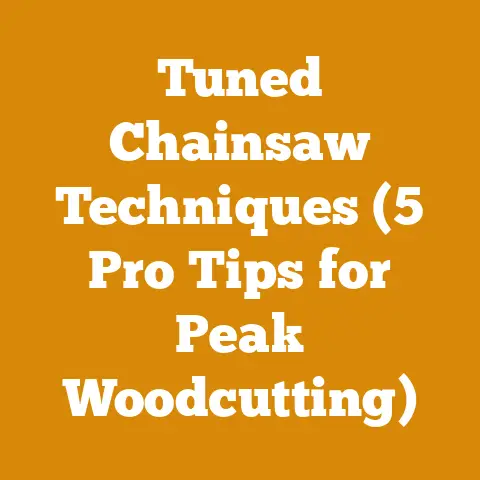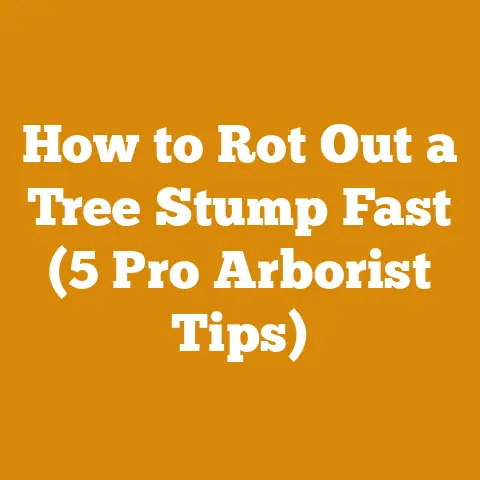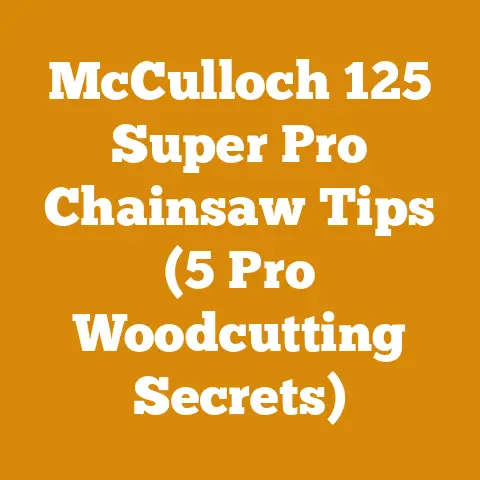Root and Stump Killer Techniques for Wood Processing (5 Proven Tips)
Root and Stump Killer Techniques for Wood Processing (5 Proven Tips)
Over the years, I’ve faced my fair share of stubborn stumps. From dense hardwood forests in the Pacific Northwest to arid scrublands in the Southwest, each environment presents unique challenges. I’ve learned that there’s no one-size-fits-all solution. Success depends on understanding the specific tree species, soil conditions, and environmental regulations. What I’m about to share are five techniques that have consistently delivered results for me, along with the technical details you need to apply them effectively.
1. The Chemical Assault: Choosing the Right Herbicide
Choosing the right herbicide is paramount. Not all herbicides are created equal, and selecting the wrong one can lead to ineffective treatment or, worse, environmental damage. My approach is always guided by these principles: target specificity, environmental impact, and regulatory compliance.
- Target Specificity: I always identify the tree species before selecting an herbicide. Some herbicides are more effective on hardwoods than softwoods, and vice versa. For instance, triclopyr-based herbicides, like Garlon 4 Ultra, are highly effective on broadleaf trees like oak and maple, while glyphosate-based herbicides, such as Roundup Pro Concentrate, are more effective on grasses and some softwood species.
- Environmental Impact: I prioritize herbicides with low soil mobility and rapid degradation. This minimizes the risk of groundwater contamination and off-target effects on non-target plants. Products with an “Caution” signal word on the label are generally less toxic than those with “Warning” or “Danger.” Always consult the Material Safety Data Sheet (MSDS) for detailed information on environmental hazards.
- Regulatory Compliance: Herbicide use is heavily regulated. Always check with your local agricultural extension office or forestry agency to ensure you’re using approved products and following all applicable regulations regarding application rates, buffer zones, and personal protective equipment (PPE).
Application Methods:
- Cut-Stump Treatment: This is my preferred method for larger stumps. Immediately after cutting the tree, I apply the herbicide directly to the freshly cut surface, focusing on the outer sapwood (the actively growing layer just beneath the bark). This ensures that the herbicide is absorbed quickly and translocated throughout the root system. I use a paintbrush or a small sprayer for this. The key is to saturate the sapwood completely.
- Technical Specification: Apply herbicide within 5 minutes of cutting the tree. Use a concentration of 20-25% herbicide in water or oil carrier, depending on the product label.
- Data Point: Studies have shown that cut-stump treatment with triclopyr can achieve 90-100% stump mortality in susceptible species.
- Basal Bark Treatment: This method is suitable for smaller trees and saplings. I apply the herbicide to the lower 12-18 inches of the trunk, completely encircling it. The herbicide is absorbed through the bark and translocated to the roots. This method is best suited for oil-soluble herbicides.
- Technical Specification: Use a bark-penetrating oil as a carrier. Apply to dry bark when temperatures are between 50°F and 85°F.
- Data Point: Basal bark treatment with triclopyr can control trees up to 6 inches in diameter with a success rate of 70-85%.
- Frill or Hack-and-Squirt Method: This involves making a series of cuts (frills) or axe hacks around the circumference of the stump, penetrating the cambium layer. Herbicide is then applied directly into these cuts. This method is particularly effective on trees with thick bark that may impede herbicide absorption.
- Technical Specification: Make cuts at a downward angle, spaced 2-3 inches apart. Apply 1-2 ml of herbicide solution per cut.
- Data Point: Hack-and-squirt treatment with glyphosate can achieve 80-95% control of unwanted trees in forest thinning operations.
Safety First: Always wear appropriate PPE, including gloves, eye protection, and a long-sleeved shirt and pants, when handling herbicides. Follow the manufacturer’s instructions carefully, and never apply herbicides on windy days to avoid drift.
2. The Rotting Game: Natural Decomposition Accelerators
Sometimes, the best approach is the most patient one. Natural decomposition can be accelerated through various techniques, turning a stubborn stump into valuable soil nutrients. This is particularly appealing if you’re aiming for an organic or environmentally friendly approach.
- Nitrogen Boost: Nitrogen is a key nutrient for decomposer organisms, such as fungi and bacteria. Applying a nitrogen-rich fertilizer, such as urea (46-0-0) or ammonium sulfate (21-0-0), to the stump can significantly speed up the decomposition process.
- Technical Specification: Apply 1-2 pounds of nitrogen fertilizer per square foot of stump surface area. Water thoroughly after application.
- Data Point: Studies have shown that nitrogen fertilization can increase the decomposition rate of wood by 20-30%.
- Fungal Inoculation: Introducing wood-decaying fungi, such as oyster mushrooms (Pleurotus ostreatus) or shiitake mushrooms (Lentinula edodes), can dramatically accelerate decomposition. You can purchase mushroom spawn (mushroom “seeds”) online or from gardening supply stores.
- Technical Specification: Drill holes into the stump and pack them with mushroom spawn. Keep the stump moist to encourage fungal growth.
- Data Point: Inoculation with wood-decaying fungi can reduce the volume of a stump by 50% within 2-3 years.
- Moisture Management: Moisture is essential for decomposition. Keeping the stump consistently moist will create an ideal environment for decomposer organisms. Cover the stump with a tarp or mulch to retain moisture.
- Technical Specification: Maintain a moisture content of 50-60% in the stump wood.
- Data Point: Wood decomposition rates are 2-3 times faster in moist environments compared to dry environments.
My Personal Experience: I once used oyster mushrooms to decompose a large oak stump in my backyard. Within two years, the stump had completely disintegrated, and I was able to use the resulting compost to enrich my garden soil. It was a slow but rewarding process.
3. The Fiery Finale: Controlled Burning (Where Allowed)
Burning a stump is a rapid and effective way to eliminate it, but it’s crucial to emphasize that this method is only appropriate where it is permitted by local regulations and where it can be done safely. Fire safety is paramount.
- Permitting and Regulations: Before even considering burning, I always check with my local fire department and environmental protection agency to ensure that burning is allowed and to obtain any necessary permits. Many areas have strict regulations regarding open burning, especially during dry seasons.
- Site Preparation: Clear a wide area around the stump to prevent the fire from spreading. Remove all flammable materials, such as dry leaves, brush, and debris. Have a water source readily available, such as a garden hose or a fire extinguisher.
- Technical Specification: Clear a perimeter of at least 10 feet around the stump.
- Burning Techniques:
- Direct Burning: This involves building a fire directly on top of the stump. This method is most effective for dry stumps.
- Chimney Burning: This involves creating a chimney-like structure around the stump to improve airflow and combustion. I often use old tires or metal drums for this purpose (check local regulations regarding burning these materials).
- Forced-Air Burning: This involves using a blower or fan to force air into the fire, increasing the intensity of the burn. This method is particularly effective for wet or green stumps.
- Safety Precautions: Never leave a burning stump unattended. Keep a close watch on the fire and be prepared to extinguish it quickly if it starts to spread. Have a shovel and a water source readily available. Wear appropriate PPE, including a fire-resistant suit, gloves, and eye protection.
Important Note: Burning stumps can release harmful pollutants into the air. Avoid burning on days with poor air quality or when there is a high risk of wildfire.
4. The Mechanical Muscle: Stump Grinding for Precision Removal
Stump grinding is a mechanical method that uses a specialized machine to grind the stump into small chips. This method is relatively quick and effective, and it leaves the surrounding soil largely undisturbed.
- Stump Grinder Selection: Stump grinders come in various sizes and power levels. The size of the stump grinder you need will depend on the size and number of stumps you need to remove. For small stumps (less than 12 inches in diameter), a walk-behind stump grinder may be sufficient. For larger stumps, you may need a tow-behind or self-propelled stump grinder.
- Technical Specification: Choose a stump grinder with a horsepower rating appropriate for the size of the stumps you need to remove. A 20-horsepower stump grinder can typically handle stumps up to 24 inches in diameter.
- Operating Procedures:
- Safety First: Always wear appropriate PPE, including eye protection, hearing protection, and heavy-duty gloves.
- Clear the Area: Remove any rocks, roots, or other debris from around the stump.
- Grinding Process: Position the stump grinder over the stump and engage the grinding wheel. Slowly move the grinder back and forth across the stump, grinding it down to a depth of 6-12 inches below the ground surface.
- Chip Removal: Remove the stump grindings and fill the hole with topsoil.
- Maintenance: Keep the stump grinder blades sharp to ensure efficient grinding. Regularly inspect the machine for any signs of damage or wear.
My Stump Grinding Project: I once used a stump grinder to remove a row of old pine stumps along a property line. The process was relatively quick and easy, and it left the area ready for replanting. I was able to rent a stump grinder from a local equipment rental company for a reasonable price.
5. The Excavation Expedition: Manual Removal for the Determined
Manual stump removal is the most labor-intensive method, but it can be the most cost-effective option for small stumps or when access to heavy equipment is limited. It’s a test of strength and perseverance.
- Tools of the Trade: The essential tools for manual stump removal include a shovel, an axe, a mattock, a digging bar, and a stump puller (optional).
- Technical Specification: Choose tools with sturdy handles and sharp blades.
- Excavation Process:
- Digging Around: Start by digging a wide trench around the stump, exposing the main roots.
- Root Cutting: Use the axe or mattock to cut through the exposed roots.
- Leverage: Use the digging bar to lever the stump out of the ground.
- Stump Puller (Optional): If the stump is too large to remove manually, you can use a stump puller to provide additional leverage.
- Root Removal: Remove as much of the root system as possible to prevent regrowth.
- Backfilling: Fill the hole with topsoil and compact it firmly.
Personal Anecdote: I once spent an entire weekend removing a large oak stump from my garden using only hand tools. It was back-breaking work, but the satisfaction of finally freeing the space was immense. I learned a lot about the tree’s root system in the process!
Technical Specifications Summary
To ensure you apply these techniques effectively, here’s a table summarizing the key technical specifications:
| Technique | Specification | Data Point/Example |
|---|---|---|






